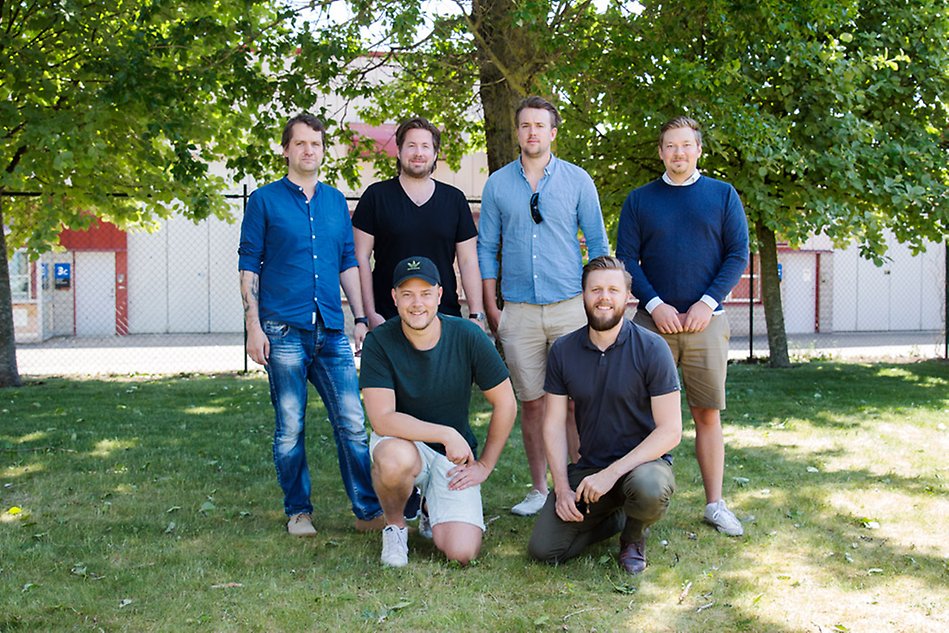Students in international drone competition
In May 2018, six students from three different engineering programmes at Halmstad University participated in an international drone competition. The drone was a result of their Bachelor thesis project. The team from Halmstad came in second place in the competition and recieved a special award for best drone design.
The students Patrick Karlsson, Emil Johansson, Marcus Rodén, Jakob Carlsén, Anders Bogga and Emil Andersson designed an advanced autonomous drone that automatically could pick up another drone. The competition started a couple of months before the final and included several qualification rounds. The students from Halmstad were the only team outside of the United States to qualify for the final in May, 2018, in Arizona. The goal of the final competition was to search an area and identify another drone, pick it up and fly it to a drop-off point. The project was done as the students' final bachelor thesis project.
During the final in Arizona, the team from Halmstad competed against three American universities: Embry-Riddle Aeronautical University – who won the competition – as well as Vanderbilt University and the University of Pennsylvania.
During the competition, the Halmstad students received an award for the best drone design with the motivation: “Halmstad University came very close to finishing the mission autonomously, and given the complexity and sophistication of their UAV design, the near miss was a commendable achievement!”
”We had some challenging but very fun days in Arizona. It was great to meet students from other universities and see how they had designed their drones”
Marcus Rodén, electrical engineer and one of the students from the Halmstad University team
Three different engineering programmes
The drone project was part of the students' bachelor thesis projects. The six students graduated in the summer of 2018 from three different engineering programmes at Halmstad University. Patrick Karlsson and Emil Johansson are computer engineers, Marcus Rodén and Jakob Carlsén electrical engineers and Anders Bogga and Emil Andersson mechatronical engineers.
The students' three different areas of expertise have all been required to create the drone. The computer engineers were responsible for the drone's ability to search, find and land through image analysis. The mechatronical students have been in charge of the design and construction of the drone and its gripping claw, and the sensor and navigation system was developed by the two electrical engineers.

Top row from the left: Emil Andersson, Emil Johansson, Marcus Rodén and Jakob Carlsén. Bottom row from the left: Patrick Karlsson and Anders Bogga.
More information
Engineering Bachelor programmes (in Swedish):
Master’s programmes (in English):
Master’s Programme in Embedded and Intelligent Systems, 120 credits

